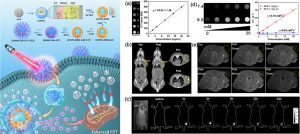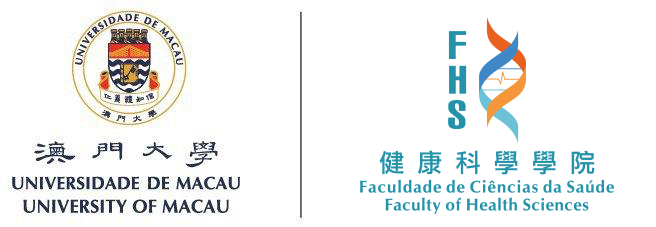The University of Macau (UM) has made new progress in medical molecular imaging and precision medicine in cancer treatment. A research team at the university has developed a photodynamic diagnostic agent with multi-modal molecular imaging contrast function and near-infrared light excitation, which can help improve the precision of photodynamic treatment of deep tumours, thereby improving treatment efficacy. The study has been published in the top international journal Biomaterials (2018 Impact Factor: 10.273).
Titled ‘Inhibiting Tumour Oxygen Metabolism and Simultaneously Generating Oxygen by Intelligent Upconversion Nanotherapeutics for Enhanced Photodynamic Therapy’, the study was a collaboration between a team led by Associate Professor Zhen YUAN in UM’s Faculty of Health Sciences and Prof Junle QU at Shenzhen University. Photodynamic therapy (PDT) is a noninvasive cancer treatment method with very few side effects. It is based on the interaction of three essential components: oxygen, photosensitisers, and visible light. Traditional PDT is usually only used to treat skin cancer because of the limited tissue penetration depth of ultraviolet light or white light used in the therapy, which makes it difficult for PDT to perform tumour treatment in deep tissues. Specifically, there are three main challenges: inaccurate tumour positioning in deep tissues, limited excitation light penetration depth, and significant hypoxia in deep tumours.
To resolve these challenging issues in traditional PDT, Prof Yuan’s team developed an intelligent compound photodynamic diagnostic agent. The multifunctional cancer theranostic agent has three advantages. First, it has MRI, CT and second near-infrared (1300 nm) fluorescence imaging capabilities, which allows it to accurately locate tumours in deep tissues. Second, it can convert 808-nm near-infrared light into visible light to excite the photosensitiser for deep tumour treatment. Third, it can intelligently release tumour respiration inhibitors that improve tumour hypoxia, thereby enhancing cancer PDT at tumour sites.
The excellent efficacy of the cancer theranostics in the intelligent photodynamic therapy agent has been confirmed through multimodal molecular imaging, confocal microscopy imaging, cell bioassays,and in vivo animal tests. The biological effects and molecular mechanisms of this new intelligent photodynamic diagnostic agent inducing tumour cell death were also carefully examined. The drug platform developed by the team has exhibited great potential for clinical application and sheds new light on a wider range of photodynamic therapies for deep tumours. This new photodynamic agent also provides a new path for PDT to carry out a wider range of deep tumour treatment.
The study was led by Prof Zhen YUAN, and the main participants include research assistants Dan WANG Bin XUE, and Yubin LIU, as well as PhD student Mengze XU on Prof Yuan’s research team. The study was jointly supported by UM (File no. MYRG2019-00082-FHS, MYRG2018-00081-FHS) and the Macau Science and Technology Development Fund (FDCT) (File no. 025/2015/A1, 0011/2018/A1). The full version of the related paper can be viewed at:
https://www.sciencedirect.com/science/article/pii/S0142961220303343?via%3Dihub.

A schematic of intelligent photodynamic diagnostic agent and multi-modal molecular imaging


